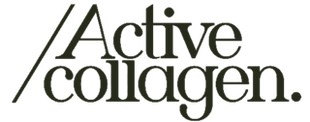PMS, premenstrual syndrome, is a varying list of symptoms that occur during the phase before your monthly period – the luteal phase. PMS is experienced by the majority of menstruating women, whether it only cause a minor inconvenience or decrease quality of life considerably.
Hormonal fluctuations that are occurring during the luteal phase are usually cause of PMS symptoms such as abdominal and back pain, breast tenderness, anxiety, fatigue, mood swings, feeling irritable and of course increased food cravings. Food cravings are one of the most significant symptoms of PMS. Not necessarily meaning that all you want to eat is chocolate and comfort foods (although this may be the case), but also that your appetite in general increases. Totally common!
However, leaning into these cravings a little too much just before your period (intense chocolate cravings we’re looking at you) can impact your nutrient levels which are oh so important for a healthy menstrual cycle.
When it comes to controlling PMS cravings its helpful to know why these may be occurring in order to combat the urge to eat the whole block of chocolate. Read on to learn how to keep your food cravings in order before the next luteal phase rolls around.
Why Are These Cravings Happening?
A lot of women will naturally change their eating habits during the different phases of the menstrual cycle in response to what their bodies are asking for. So, why do we begin to crave certain things during the luteal phase?
During this phase, there are certain neurotransmitter systems that are implicated. These are the GABAergic and serotonergic systems which decrease during this time and are partly responsible for bringing on PMS symptoms. GABA is the neurotransmitter that exhibits a calming effect, controlling anxiety symptoms, whereas serotonin controls mood, happiness and sleep regulation.
Of both of these, the reduction in serotonin seems to be the culprit for mediating increased PMS cravings. This is due to the impact serotonin normally has on our body, producing that feel good effect. We all know the joy eating brings so it’s no wonder that when levels of serotonin are reduced we seek out ways to make ourselves feel good. Consumption of foods like chocolates, sweets, carbohydrates and salty foods are particularly sort after in those with PMS to reduce irritability and produce a positive effect.
Another factor of PMS cravings is increased hunger in general. It’s no joke that whether it be a week before or quite literally hours before your period comes you may have a significant surge in appetite. In both men and women, certain changes in hormones can have an effect on hunger levels.
During the follicular phase (the first phase of a menstrual cycle), oestrogen is on a steady rise which inhibits cravings and keeps our food intake stable. However, once we hit the luteal phase progesterone has peaked and oestrogen levels are significantly lower which enhances our appetite. Studies have shown that weight fluctuations commonly seen at different phases of the menstrual cycle is the outcome of increased appetites and energy intakes caused by these hormonal variations.
Combatting Cravings
Here at Active Collagen we believe that body knows best. Which is why certain cravings may be an unconscious sign that your body needs something.
Chocolate – When we have strong cravings for chocolate it can be a sign of magnesium deficiency. And obviously, cravings don’t go away unless you satisfy them, right? Well, not necessarily. Reaching for foods rich in magnesium such as nuts, unrefined wholegrains, dark leafy greens and (funnily enough) dark chocolate are all excellent ways to replenish your magnesium stores. Though when you do reach for chocolate, opt for darker varieties with high cocoa/cacao amounts for greater magnesium content.
Carbohydrates – Carbs, carbs, carbs. A sign your body needs more energy. Carbs contain our body’s favourable fuel source, glucose. Though, when we consume simple carbohydrates alone without protein or fats this can spike our blood sugar and lead us down the path of craving even more fuel. When carb cravings hit opt for complex carbohydrates such as sweet potato, wholegrain breads, oats, brown rice and pseudo grains like quinoa or millet to help stabilise blood sugar and keep you satiated.
Comfort foods – If you find yourself craving comforting curries, spaghetti Bolognese, warm bowls of oats and hot chocolates you may actually be onto something. Not only will eating these foods trigger that feel good response that gives us a boost of serotonin, but a lot of these foods contain iron. Iron is essential for a healthy menstrual cycle as a substantial amount is lost through menstrual blood. Blood building foods like oats, red meat, beans, lentils and nuts are great wholefood sources of iron that you can prioritise during this phase.
Luckily, we’ve curated a replenishing hot chocolate powder Active Cycle that contains key ingredients like magnesium, iron and Peruvian cacao powder to replenish the body’s stores of vitamins and minerals lost during a monthly period and help control those pesky PMS cravings. Although it can be taken at any time during your cycle it can be a great alternative when your chocolate cravings arise.
We are all human and giving into cravings sometimes is the only way! However, it’s cool to know that there are certain alternatives and strategies that can help you combat cravings - before you eat the entire block of chocolate.
Tiranini, L., & Nappi, R. E. (2022). Recent advances in understanding/management of premenstrual dysphoric disorder/premenstrual syndrome. Faculty reviews, 11, 11. https://doi.org/10.12703/r/11-11
Rapkin, A. J., & Akopians, A. L. (2012). Pathophysiology of premenstrual syndrome and premenstrual dysphoric disorder. Menopause international, 18(2), 52–59. https://doi.org/10.1258/mi.2012.012014
Hirschberg A. L. (2012). Sex hormones, appetite and eating behaviour in women. Maturitas, 71(3), 248–256. https://doi.org/10.1016/j.maturitas.2011.12.016
Nehlig A. (2013). The neuroprotective effects of cocoa flavanol and its influence on cognitive performance. British journal of clinical pharmacology, 75(3), 716–727. https://doi.org/10.1111/j.1365-2125.2012.04378.x
Prentice, A. M., Mendoza, Y. A., Pereira, D., Cerami, C., Wegmuller, R., Constable, A., & Spieldenner, J. (2017). Dietary strategies for improving iron status: balancing safety and efficacy. Nutrition reviews, 75(1), 49–60. https://doi.org/10.1093/nutrit/nuw055




